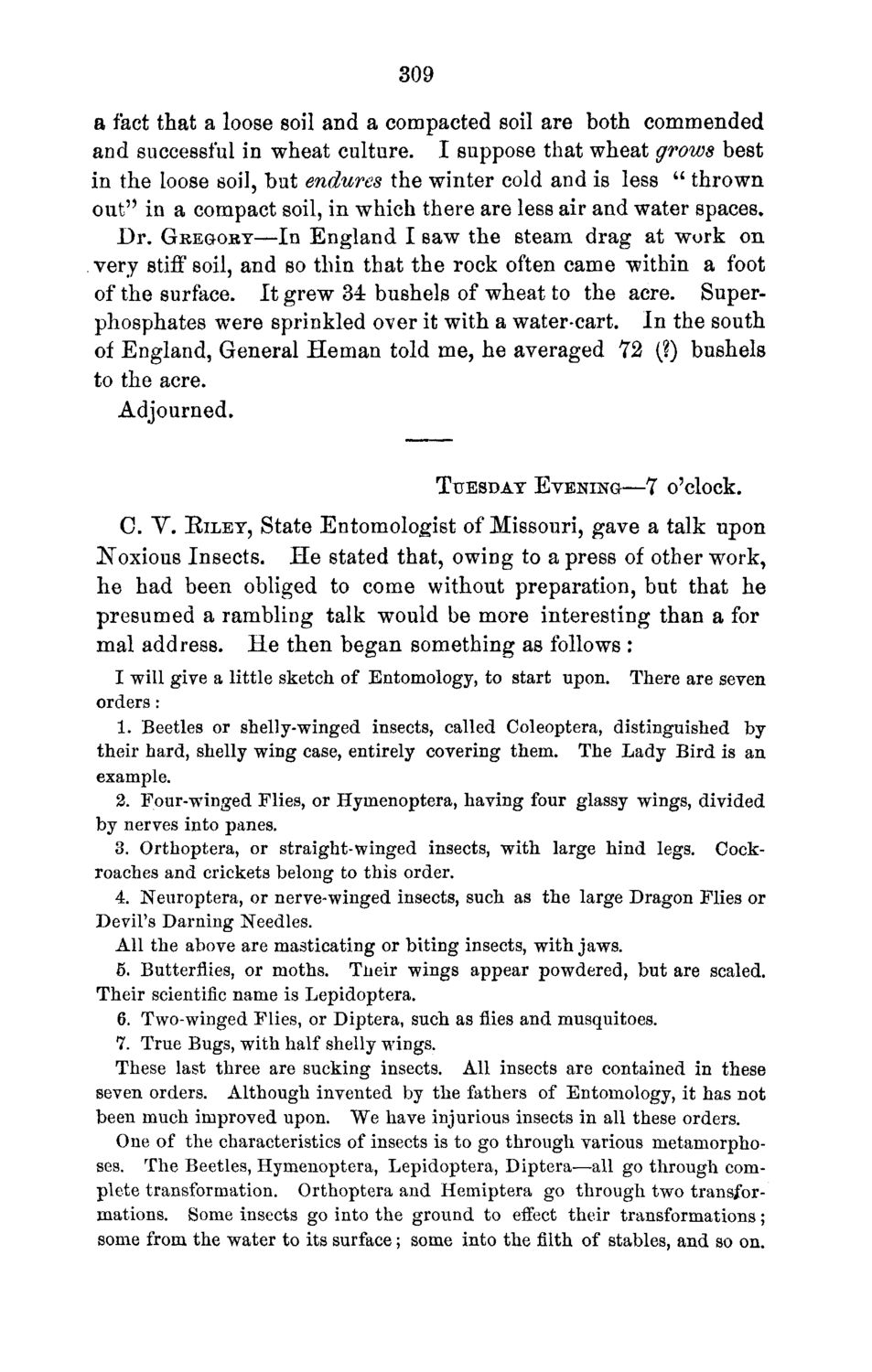| |
| |
Caption: Board of Trustees Minutes - 1870
This is a reduced-resolution page image for fast online browsing.

EXTRACTED TEXT FROM PAGE:
309 a fact that a loose soil and a compacted soil are both commended and successful in wheat culture. I suppose that wheat grows best in the loose soil, but endures the winter cold and is less " thrown out" in a compact soil, in which there are less air and water spaces. Dr. GREGORY—In England I saw the steam drag at work on very stiff soil, and so thin that the rock often came within a foot of the surface. I t grew 34 bushels of wheat to the acre. Superphosphates were sprinkled over it with a water-cart. I n the south of England, General Heman told me, he averaged 72 (?) bushels to the acre. Adjourned. TUESDAY EVENING—7 o'clock. C. V. RILEY, State Entomologist of Missouri, gave a talk upon Noxious Insects. H e stated that, owing to a press of other work, he had been obliged to come without preparation, but that he presumed a rambling talk would be more interesting than a for mal address. H e then began something as follows : I will give a little sketch of Entomology, to start upon. There are seven orders : 1. Beetles or shelly-winged insects, called Coleoptera, distinguished by their hard, shelly wing case, entirely covering them. The Lady Bird is an example. 2. Four-winged Flies, or Hymenoptera, having four glassy wings, divided by nerves into panes. 3. Orthoptera, or straight-winged insects, with large hind legs. Cockroaches and crickets belong to this order. 4. Neuroptera, or nerve-winged insects, such as the large Dragon Flies or Devil's Darning Needles. All the above are masticating or biting insects, with jaws. 5. Butterflies, or moths. Their wings appear powdered, but are scaled. Their scientific name is Lepidoptera. 6. Two-winged Flies, or Diptera, such as flies and musquitoes. 7. True Bugs, with half shelly wings. These last three are sucking insects. All insects are contained in these seven orders. Although invented by the fathers of Entomology, it has not been much improved upon. We have injurious insects in all these orders. One of the characteristics of insects is to go through various metamorphoses. The Beetles, Hymenoptera, Lepidoptera, Diptera—all go through complete transformation. Orthoptera and Hemiptera go through two transformations. Some insects go into the ground to effect their transformations; some from the water to its surface; some into the filth of stables, and so on.
| |